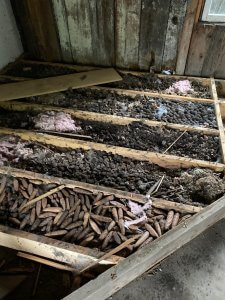Ah, the simple pleasure of an impeccably organized pantry. Who doesn’t feel at least slightly re-energized after a bout of over-the-top arranging? As it turns out, squirrels might feel the same way about neatly-organized nuts.
Scientists from the University of California Berkeley
Aptly called “scatter-hoarders,” squirrels create lots of small caches where they store their loot; lest a crafty competitor or natural disaster wipes out their stockpiles. By having lots of small stashes all over the place, the squirrels ensure that at least some will stay safe. But the more caches you make, the more difficult it becomes to remember where all of them are. That’s where organization skills go a long way, cognitively speaking.
When we humans organize, we tend to put group things into discrete units. Scientists call this “chunking.” We humans do it daily, most regularly with phone numbers. Whether we realize it or not, we break the number into smaller strings—the area code, followed by the first three digits, and then the last four, rather than try to recall an unbroken line of numbers.
This type of chunking helps us remember locations, too. If you have 50 books, you’re never going to be able to recognize the exact location of each one on a bookshelf. But you could likely find any given book if you split the books into categories—say, non-fiction and fiction—and took a mental note of where each chunk is.
Chunking
We consider chunking a key mechanism of human cognition; studies have shown that rats and other animals can also use this critical memory recall strategy (aka mnemonic) in a laboratory setting. However, tests for chunking in wildlife are few and far between.
To find out if squirrels are chunkers, researchers from UC Berkeley gave 45 free-ranging Eastern fox squirrels a series of sixteen seeds from a central location: four each from four different species of plant. Some of the time, they gave them in organized groups. Others, they gave the nuts in a pseudorandom order, where they were mixed, and no species was presented twice in a row.
When the squirrels hid their loot, the scientists used GPS to record the location of each cache. They then reran the experiment, but this time, each time a squirrel hid a nut, the experimenters gave the next from that spot but later on, thus handing out the nuts from different locations each time. Then, they compared how often the squirrels overlapped nut varieties in their caches in each of the trials.
The Experiment
As the fastidious hoarders they are, the squirrels took the nuts handed out from the isolated central location and put them into species-specific storage. It made no difference what order the nuts were handed out in. “This first demonstration of chunking in a scatter-hoarder underscores the cognitive demand of scatter-hoarding,” the authors wrote. If it weren’t mentally taxing to remember all of the hiding spots, the animals wouldn’t need chunking to keep track of their findings.
However, when the researchers began handing out nuts from multiple locations, the animals’ neat little system started to break down. When the nut species were handed out in sequence from various locations, the species overlap was minimal, including up to only two species per cache. However, when everything was mixed and handed out from different places, the rodents’ organizing skills failed. Instead of grouping nuts by species, the squirrels appeared to avoid caching in the same areas as they had previously.
The Results
It’s unclear why the animals changed strategies. The pseudorandom order from multiple locations put a tremendous memory burden on their brains; so the animals should have needed a mnemonic device to remember their organized caches even more than before accurately. It’s possible that their mental capacity couldn’t handle the overload of information. Or, the strategy switch may have been due to the increase in the energetic demand of the organized grouping nuts by species and location when the different nuts are handed out so far apart from one another.
When you actually think about it, the mental energy it likely takes to be a scatter-hoarding squirrel is quite astronomical. Most humans find it hard enough to locate their keys after they put them down ten minutes ago; imagine remembering where you buried a nut in the woods weeks after!
The photo included shows an example of chunking we discovered in a generational squirrel job. We had never seen anything like it in all our years of service, but after finding this study, we are curious to know if we will ever stumble upon a nut hoard again!
Anwar, Yasmin. “Fox Squirrels Use’ Chunking’ to Organize Their Favorite Nuts.” Berkeley News, 15 Sept. 2017, news.berkeley.edu/2017/09/12/nut-chunking/.